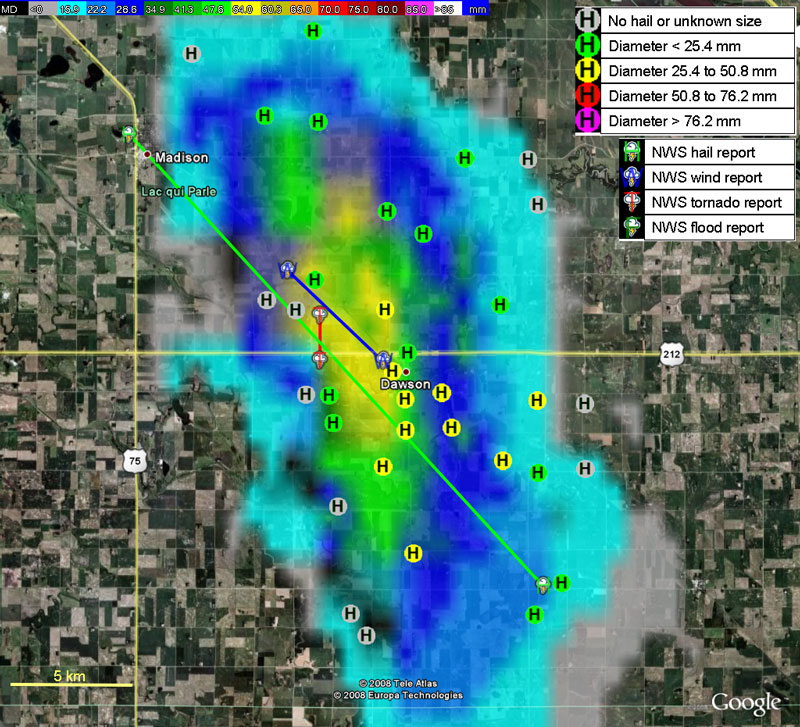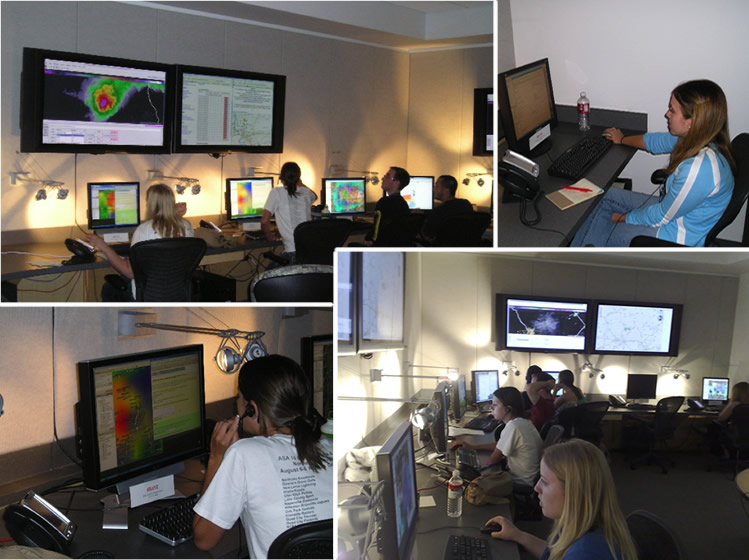Severe Hazards Analysis & Verification Experiment (SHAVE) Project

SHAVE and NWS reports for a storm in Lac qui Parle County, MN on 27 July 2006 [+]
The Severe Hazards Analysis and Verification Experiment project was a program of the NOAA Hazardous Weather Testbed aimed at combining high-resolution radar data with public reports of hail, wind damage, flash flooding, and frozen precipitation.
SHAVE ran annually from mid-spring through late summer, 2006 to 2015. Each year, data were collected by a team of University of Oklahoma meteorology students working closely with scientists from the NOAA National Severe Storms Laboratory and the Cooperative Institute for Mesoscale Meteorological Studies (CIMMS, now CIWRO). The SHAVE team conducted phone surveys of residents in the path of target storms, and blended those reports with radar information to evaluate the performance of radar technology and forecaster decision-making tools. This helped to satisfy a variety of needs, including:
- Providing high-resolution verification data for the National Weather Radar Testbed's multi-purpose phased array radar.
- Using high-resolution verification data in the development of techniques for probabilistic warnings of severe thunderstorms.
- Evaluating the performance of multi-sensor, multi-radar severe weather algorithms.
- Associating changes in hail size and wind damage distributions with storm evolution.
- Enhancing climatological information about severe storm threats in the United States.

SHAVE student researchers [+]
The high spatial and temporal resolution of the dataset collected during SHAVE facilitated the development of tools that improved forecasts and warnings of severe thunderstorms and tornadoes, and paved the way for enhancements to the historical severe storms database. NSSL/CIWRO researchers applied the datasets for verification of Multi-Radar, Multi-Sensor detection algorithms and techniques and used the information to help develop dual-polarized radar. Some National Weather Service forecast offices even used SHAVE data to assist in storm warning verification.
The program logged thousands of reports while it ran. As a primarily student-run operation, the SHAVE project provided rich opportunities for professional development and led to year-round undergraduate research assistantships and research projects for more than half of the participants.
More information about SHAVE: Kiel Ortega

